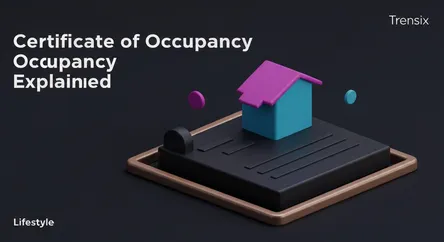Lifestyle
Certificate of Occupancy Explained

Learn what a Certificate of Occupancy (CO) is, why it's crucial for real estate, and how it proves a property is safe, legal, and livable.
What is it?
A Certificate of Occupancy (CO) is an official document issued by a local government agency or building department. It certifies that a property is safe and habitable, complying with all relevant building codes and zoning laws. This document is typically required for any newly constructed building before anyone can move in. It's also necessary after major renovations or when a property's primary use changes, such as from commercial to residential. Essentially, the CO is the final stamp of approval from inspectors, confirming that the structure meets all health and safety standards, from electrical wiring to plumbing and structural integrity.
Why is it trending?
The Certificate of Occupancy is gaining attention due to a competitive real estate market and a surge in home renovations. Today's buyers are more informed, demanding proof of a property's legal status and safety. With the rise of accessory dwelling units (ADUs) and extensive remodels, local authorities are enforcing code compliance more strictly. Furthermore, lenders and insurance companies are tightening their requirements, making a valid CO a non-negotiable part of the financing and insuring process, thus pushing it into the spotlight for homeowners and investors.
How does it affect people?
For homeowners and sellers, lacking a CO can be a major roadblock. It can delay or completely derail a property sale, lead to hefty fines, and may even force them to tear down unpermitted work. For buyers, a CO provides crucial peace of mind, assuring them that their new home is legally built and safe. It's essential for securing a mortgage, as most lenders will not finance a property without one. Without a valid CO, you may be unable to legally occupy the property, obtain homeowners insurance, or connect utilities, making it a critical document in any real estate transaction.